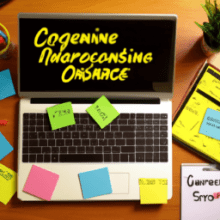What’s The Role Of Personalization In Email Marketing?
In the world of email marketing, personalization plays a crucial role in engaging and connecting with your audience. By tailoring your messages to each individual recipient, you not only capture their attention but also establish a sense of familiarity and trust. Personalization allows you to address your subscribers by name, understand their unique preferences and interests, and ultimately deliver content that is relevant and meaningful to them. So, what’s the role of personalization in email marketing? It’s the key to maximizing open rates, click-through rates, and ultimately, the success of your email campaigns.
Personalization in Email Marketing
Personalization plays a crucial role in email marketing, allowing businesses to improve their communication with customers and build stronger relationships. By tailoring emails to the specific needs and preferences of each individual, marketers can increase open rates, boost engagement, and ultimately drive conversions. In this article, we’ll explore the benefits of personalization in email marketing and delve into the various types of personalization strategies that can be implemented. We’ll also discuss how to effectively collect user data, maintain its accuracy, segment subscriber lists, create personalized templates, and measure the results. Finally, we’ll provide some best practices for successful personalization initiatives.
Benefits of Personalization
Improves Open Rates
When an email is personalized, it captures the attention of the recipient, leading to higher open rates. By including the recipient’s name in the subject line or using personalized content in the preview text, you can make the email more enticing and relevant to the individual. This personal touch instantly grabs the reader’s attention and increases the likelihood of them opening the email to explore its contents further.
Increases Click-through Rates
Personalized emails are more likely to resonate with recipients, leading to increased click-through rates. By tailoring the content based on the recipient’s interests, preferences, or purchase history, you can present them with relevant products or offers that they are more likely to engage with. When recipients feel that the email is specifically designed for them, they are more inclined to click on the call-to-action buttons and explore further, effectively driving traffic to your website or landing page.
Enhances Customer Engagement
Engagement is vital for building strong customer relationships, and personalization encourages higher levels of engagement. By creating emails that speak directly to the recipient’s needs, interests, and preferences, you can establish an emotional connection. When customers feel that a brand understands and cares about their individuality, they are more likely to engage with the content and respond positively, leading to increased loyalty and brand advocacy.
Boosts Conversion Rates
Ultimately, the goal of email marketing is to drive conversions, and personalization has a significant impact on this metric. By leveraging personalized content, recommendations, or offers, you can create a sense of urgency, exclusivity, or relevance that motivates recipients to take action. Whether it’s making a purchase, signing up for a webinar, or downloading a resource, personalization increases the chances of converting leads into customers.

Types of Personalization
Dynamic Content Personalization
Dynamic content personalization involves tailoring the email content based on the recipient’s behavior, preferences, or demographic information. This could include showcasing related products based on past purchases, highlighting items left in the shopping cart, or presenting personalized offers based on the recipient’s browsing history. By dynamically adapting the email content to match the individual’s specific interests or needs, you can create a more engaging and relevant experience.
Segmentation Personalization
Segmentation personalization involves dividing your subscriber list into different segments based on specific criteria such as demographics, behavior, or location. By grouping subscribers with similar characteristics together, you can deliver targeted content that is more likely to resonate with each segment. For example, you might send tailored emails to different age groups or geographical locations, ensuring that the content is relevant and appealing to each segment.
Triggered Personalization
Triggered personalization involves sending emails based on specific triggers or actions taken by the recipient. For example, you could automatically send a welcome email when someone signs up for your newsletter, or a reminder email when a customer abandons their shopping cart. By leveraging these triggers, you can deliver timely and personalized messages that capture the recipient’s attention at the right moment.
Personalized Subject Lines
Subject lines are the first thing recipients see when they receive an email, and personalizing them can significantly impact open rates. By including the recipient’s name or referencing their recent interaction with your brand, you can make the subject line feel more personal and relevant. A personalized subject line stands out in a crowded inbox and entices the recipient to click and open the email.
Personalized Images
Visual content is powerful in conveying messages and evoking emotions. By personalizing images within your emails, you can create a greater sense of connection and relevance. For example, you could display images of products that the recipient has previously shown interest in, or feature images that align with their demographics or preferences. Personalized images make the email more visually appealing and increase the chances of capturing the recipient’s attention.
Implementing Personalization in Email Marketing
Collecting User Data
To start implementing personalization in email marketing, it’s essential to collect user data. There are various methods to gather the necessary information about your subscribers, including:
Opt-in Forms
Opt-in forms allow you to collect user data directly from your website visitors. By providing a form where visitors can submit their email addresses and share additional details if desired, you can start building a database of information that will enable personalized email marketing.
Preference Centers
Preference centers provide subscribers with the opportunity to self-segment and customize their communication preferences. By allowing them to choose the types of emails they receive or the frequency of communications, you can gather valuable insights into their interests and tailor future emails accordingly.
Website Tracking
Tracking user behavior on your website can provide valuable data for personalization. By monitoring the pages they visit, the products they browse, or the actions they take, you can gain insights into their preferences and create personalized emails that align with their interests.
Purchase History
Utilizing purchase history data can help personalize emails by showcasing related products, offering exclusive discounts, or providing relevant recommendations. By analyzing past purchases, you can tailor future emails to align with the recipient’s preferences and increase the chances of conversion.
Maintaining Data Accuracy
To ensure the effectiveness of personalization efforts, it is crucial to maintain accurate and up-to-date user data. Consider implementing the following practices:
Regular Data Cleansing
Carry out regular data cleansing to remove duplicates, correct inaccuracies, and update outdated information. By keeping your subscriber list clean, you can rely on accurate data when personalizing your emails.
Updating Preferences
Allow subscribers to update their preferences easily. By providing a simple process for subscribers to modify their interests, you can ensure that your emails remain relevant and personalized over time.
Checking for Inconsistencies
Regularly review your data for any inconsistencies or errors that may impact personalization efforts. By meticulously checking for inconsistencies, you can maintain a high level of accuracy and prevent any misunderstandings or inappropriate targeting.
Segmenting Subscriber Lists
Segmentation is a powerful tool for personalization. By dividing your subscriber list into different segments, you can tailor your emails to suit each group’s preferences and needs. Consider the following segmentation strategies:
Demographic Segmentation
Segmenting your subscribers based on demographic information such as age, gender, or location allows you to send targeted emails that are more relevant to each group. For example, you can customize content based on specific age-related interests or regional preferences.
Behavioral Segmentation
Behavioral segmentation involves grouping subscribers based on their actions or behaviors. By analyzing how subscribers interact with your emails or website, you can send targeted emails that align with their specific behavior. For example, you can send personalized emails to subscribers who frequently engage with a certain type of content.
Location-Based Segmentation
Segmenting subscribers based on their geographical location allows you to deliver localized content or location-specific offers. By tailoring emails to include information that is relevant to recipients in their specific region, you can create a more personalized and engaging experience.
Past Purchase History Segmentation
Segmenting based on past purchase history enables you to send personalized emails featuring related products, product recommendations, or exclusive discounts. By leveraging the recipient’s previous purchases, you can deliver emails that align with their preferences and increase the chances of conversion.
Creating Personalized Templates
Once you have collected and segmented your user data, it’s time to create personalized email templates. Consider the following strategies:
Dynamic Content Integration
Integrate dynamic content into your email templates to automatically adjust elements based on each recipient’s data. By dynamically displaying products, recommendations, or offers that are specific to each individual, you can create a more personalized and engaging email experience.
Personalized Salutations
Begin your emails with a personalized salutation that includes the recipient’s name. Addressing subscribers by their name adds a personal touch to the email and helps establish a stronger connection right from the start.
Tailored Product Recommendations
Include personalized product recommendations based on the recipient’s past browsing or purchase history. By showing customers items they are likely to be interested in, you can increase the chances of conversion and enhance their overall shopping experience.
Past Purchase or Browsing History
Personalize emails by referencing a recipient’s past purchase or browsing history. By referring to the specific items they have shown interest in, you can make the email more relevant and increase the chances of capturing their attention.
Testing and Measuring Results
To ensure the effectiveness of your personalization efforts, it is essential to test and measure the results. Consider the following strategies:
A/B Testing
Conduct A/B testing to compare different elements of your emails and determine which variations resonate better with your audience. Test different subject lines, content layouts, or call-to-action buttons to optimize your personalization efforts.
Open and Click-through Rates
Monitor open rates and click-through rates to determine the impact of personalization on recipient engagement. By tracking these metrics, you can identify which personalization tactics are most effective and refine your strategies accordingly.
Conversion Tracking
Track conversions to assess the success of your personalization efforts in driving desired actions. By monitoring the number of subscribers who made a purchase or completed a specific goal, you can measure the effectiveness of your personalized emails and make data-driven decisions.
Return on Investment Analysis
Analyze the return on investment (ROI) of your email marketing campaigns to understand the financial impact of personalization. By assessing the revenue generated from personalized emails compared to the overall cost of your campaigns, you can justify the value of personalization and make informed decisions regarding resource allocation.

Best Practices for Personalization
To ensure effective personalization in email marketing, consider the following best practices:
Start with the Basics
Start by personalizing the basics, such as including the recipient’s name in the subject line or greeting. These small personalization touches can make a significant impact on recipient engagement.
Focus on Customer Journey
Personalize emails based on the recipient’s position in their customer journey. Tailor content to align with their specific needs, whether they are new subscribers, loyal customers, or inactive users. By addressing their unique requirements, you can nurture the relationship and encourage them to move along the customer journey.
Automate Personalization
Utilize automation tools to streamline personalization efforts. Set up automated workflows that trigger personalized emails based on specific actions or milestones, such as a welcome series for new subscribers or personalized recommendations for repeat customers. Automating personalization saves time and ensures consistency in delivering targeted content.
Continuously Update Data
Regularly update and refresh your user data to ensure it remains accurate and relevant. By collecting new information and removing outdated records, you can maintain the effectiveness of personalization efforts and deliver timely, personalized content.
Monitor and Analyze Metrics
Continuously monitor and analyze key metrics to measure the impact of personalization. Pay attention to open rates, click-through rates, conversion rates, and ROI to understand how personalization is affecting recipient engagement and overall campaign success. Use these insights to fine-tune your strategies and optimize your email marketing efforts.
In conclusion, personalization is a powerful tool that can significantly impact the success of email marketing campaigns. By tailoring emails to the specific needs and preferences of each individual, businesses can improve open rates, increase engagement, and drive conversions. By implementing dynamic content personalization, segmentation personalization, triggered personalization, personalized subject lines, and personalized images, marketers can create more relevant and engaging email experiences. By effectively collecting user data, maintaining its accuracy, segmenting subscriber lists, creating personalized templates, and testing and measuring results, businesses can optimize their personalization efforts and achieve greater success in their email marketing campaigns. By following best practices such as starting with the basics, focusing on the customer journey, automating personalization, continuously updating data, and monitoring metrics, businesses can ensure the effectiveness and ongoing success of their personalization initiatives. With personalization at the forefront, email marketing can become a powerful means of connecting with customers on a more personal level and driving business growth.




